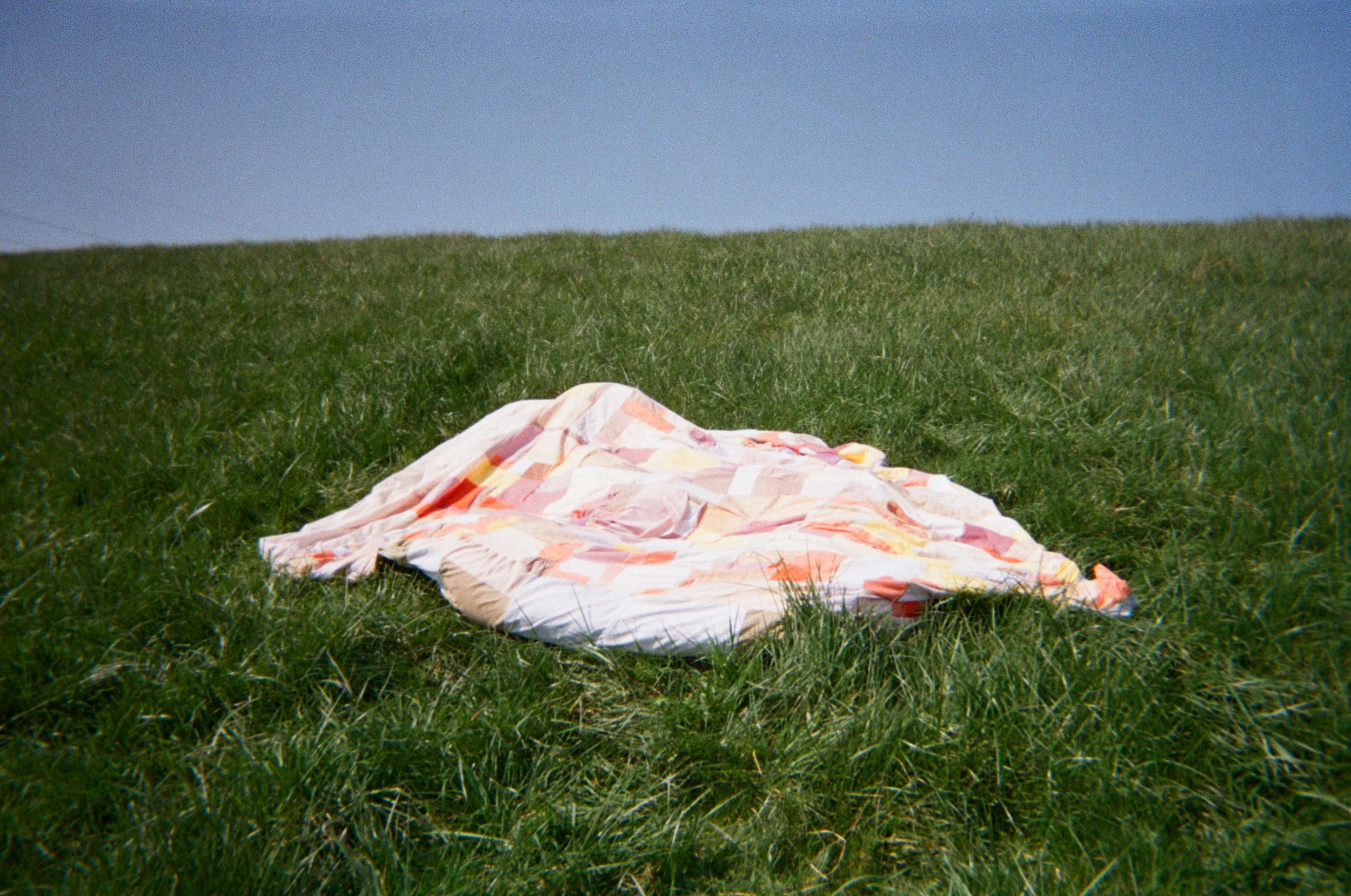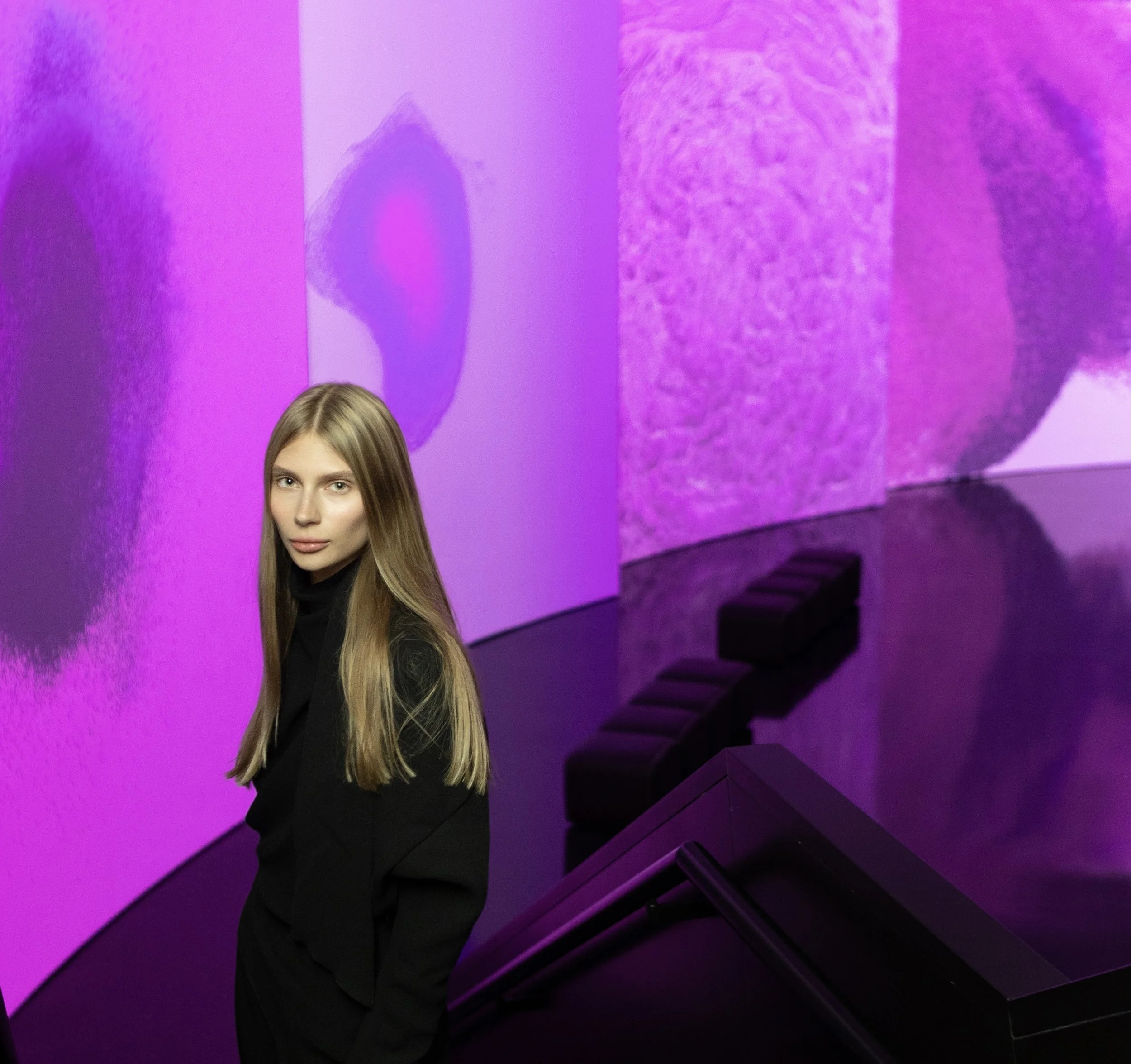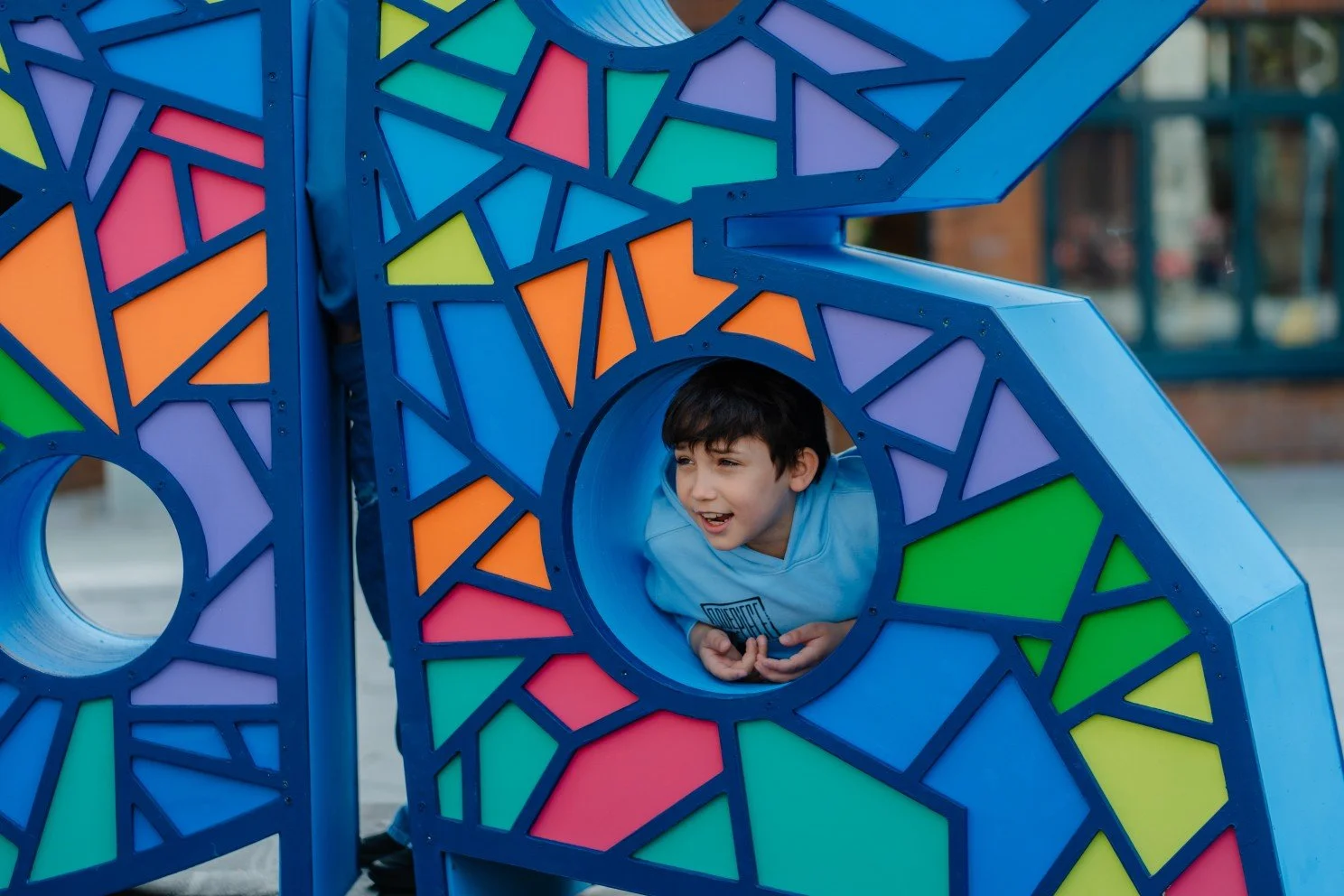10 Questions with Devika Pararasasinghe
Devika is currently living and working in London by trade as an artist and writer. Devika graduated, as of September 2022, with a research MFA at Ruskin School of Art, University of Oxford.
Devika Pararasasinghe - Portrait | photo credit: Emma Hambly
ARTIST STATEMENT
Devika’s practice deals with[in] the working-class [invisible]-labour ecosystem[s] and [invisible]-reproductive labours, giving into the visuals between low-fi and high-art aesthetic scenarios. Devika is interested in a counter to the instructional bias of how we handle the trades of the classed-colloquial, in the cont[r]acts of labour, waged/unwaged, acknowledged/disavowed, and where it fits in the cycles of consumption, exploitation, and [re]production.
Writing for Devika is an act of monological autonomy and re-narrativising. Writing and poetry are feeders, which she has channelled into other mediums like textiles to contend with cavernous institutional spaces while also being intimate works of her labour, laboured, and all the worlding in between — as Home. Any hard anonymity is gone beyond the shared secrets between the two; her words and she are out of the home now.
AN OFF-HAND DRAPE, 2022 © Devika Pararasasinghe
INTERVIEW
Please, introduce yourself to our readers. What is your background and why did you decide to be an artist in the first place?
I do not think I ever articulated the ambition as such, this is my current situation, and how I am describing my current situation.
What is your aim as an artist?
To make things that treat wounds, and art, I feel can treat wounds, at least it speculates to do so –. Art gives latitude to different ways to narrate stories, but its fallacy may be that it’s always [my/your] voice. If the work is to speak to sovereignty - it must have the liberty to hold such an overhaul –. I am always looking for any opportunity to channel and exit this from my body.
You work with several different mediums, from installations to textiles and photography. How would you define yourself as an artist?
Defining myself may feel a bit constrictive, but I will always try to keep it as broad as possible. I am a maker, and my practice is interdisciplinary enough, coexisting and overlapping between different artistic practices and mediums, but that just means I am not particularly loyal to any medium and intend to always be comfortable and encourage myself in exploring and wearing a new face. When making and producing work, new conversations always emerge, and a language of sorts fruitfully evolves and becomes present. Therefore, I am hopeful to search for the polyvocality in even a breathing sample.
The healing power of sunshine, 2023 © Devika Pararasasinghe
The centre is anything but a neutral space.
‘- you know, the first sin was a woman eating’
we’re an importance in briefness,
nodding to versions of which we used to be
anyone in the coats they’re fully wrapped up in,
revealing hidden secrets
a bit more lady
than usual, but we like it as usual.
The one-step finally gathers, leading from the teeth.
everyone’s earmarked for a purpose
the needle drops down,
The sounds of this house of worship pushed the walls around it outward.
say what is between me, you, and the wallpaper,
I’m talking about a commitment to the bit
an alien commitment made a joke out of this white-hot rage
I still ate it up, spit it out, then ate it again.
Know that the words fail, and when they fail, - eyes speak
When the gaze is too much, who may pull their eyes from sleep?
any which way of the willing can hold the centre
Can the centre hold an outright good?
Cowered on this ground. Ignoring pleas to let it rest.
my body doesn’t cater to that kind of movement.
Speaking of mediums, what is your preferred one? The one you feel closer to your practice? And what is, on the contrary, the one you find more challenging?
Maybe this is a naïve answer, but I do not have a preferred medium, and maybe because of this, I think I find all the mediums equally challenging when it comes to communicating my intentions—dually without being obtuse, and especially knowing that I do not own the whole meaning of my work. The receptor, visitor, and audience hold that meaning, and it is challenging across all forms of expression within my work. This is particular to installations and situating works in general for their public display. I seemingly will continue to struggle with not always knowing where the work ended and where the space chose to pick up—the gap, when to fill it, and when to leave it alone, be done, and let it breathe.
Picture in service of a happy idea, 2023 © Devika Pararasasinghe
Flinch at a signpost, 2023 © Devika Pararasasinghe
What are the main ideas behind your work, and what messages were you trying to convey?
My practice aims to deal with[in] the working-class [invisible]-labour ecosystem[s] and [invisible]-reproductive labours, giving into the visuals between low-fi and high-art aesthetic scenarios.
I am interested in a counter to the instructional bias of how we handle the trades of the classed-colloquial, in the cont[r]acts of labour, waged/unwaged, acknowledged/disavowed, and where it fits in the cycles of consumption, exploitation, and [re]production.
Writing, for me, is an act of monological autonomy and re-narrativising. Writing and poetry are feeders, which I have channelled into other mediums like textiles to contend with cavernous institutional spaces while also being intimate works of my labour, laboured, and all the worlding in between—as Home. Any hard anonymity is gone beyond the shared secrets between the two; my words and I are out of the home now.
I have written poems over the past year or so about me, my home, and the days I have lived in ritual, one after another. Words hold things, story-telling is a bag I carry with me, and poems are the lived-in feelings that tell of the people I know.
The notion of home takes centre in my work, that home can be as temporary as a night at a friend’s house. Home is a style made up of mnemic objects in a poetic embrace. These homogeneous environments, the changed understanding of homeyness, and how we decorate these homes, as going back to another staging, a fiction-ing. One’s home becomes part of the fiction of how one sees themselves, and how one would like to be seen by others.
We talk in spaces, for all languages/conversations/discourses are in spaces, all in the commonality of the community which we have laboured and labelled places[home] for. We have a kinship with the world, and we are kin. I am interested in how objects in space can be organised or better re-organised, re-conditioned, multiplied, and circulated to empower the reclamation of space production. What future architecture could be developed and received, and how should we choose to live in those spaces? To find means in the way the large windows frame a view, how they may forgive the sun and embrace being bathed in its light, and know it as sculptural.
alter-piece.
The relief of a gaze
is a blessing to see in a smog.
Behind a cloud, a low, rich light split the view
when drinking in time with my family.
An alter piece abbreviates
the slip that finds refuge.
Generative is the offering to all the hands
that touch.
I now trailed to place a heart beneath my ribs.
With luck, forward
I hang my dreams on a blessing in smog.
In your statement, you say you work in the “realm of flirting-survival-ecologies; this invention with scraps, bits, and starts as a future manifesting of sovereignty.” Can you further explain this concept?
Artists have permission to be interplanar/interdisciplinary to produce a kind of legibility in a legacy of chaos. Artists as potential public narrators [may have plausible [un]deniability] – but it does not necessarily lead to an authoritative claim.
I aim for the art made; the materials, once fostered, can return to the land from whence they were fed to return to the thing itself. I work primarily with found and second-hand materials – the scraps, bits, and starts that make up the everyday. When it comes to textiles, all textiles dyed are dyed naturally with handmade dyes made from primarily food waste, thus as such, successfully have been red cabbage, onion skins, avocado stones/peel, powdered turmeric, black tea, and hedgerow pigment, i.e., dried mistletoe.
I hope the work made registers to be seen as a speculative commodity, as something beyond the barely complicit, to manifest sovereignty, in which rebels against its commodity status, thus offering different orders of worth. Art is not dead labour; unlike life, art offers chances to do and then re-do again. We constantly change the function of objects, i.e., a chair becomes a ladder. Thus, these objects are moved by bodies depending on our needs. Even though the body may not be present, the space is known through the objects themselves. Any object in space is its information system [think of Bateson’s, a man, an axe, and a tree]. This becoming and unbecoming of an object is a moving thing.
For what are trials are atoms still moving, 2022 © Devika Pararasasinghe
What do you see as your work’s strengths, visually and conceptually?
The strength of my work labours between the visual aesthetics and the concepts working behind them is particularly charged for me within the writing. Writing makes unplaceable objects, unplaceable content. I have thus begun to think of writing as an object, as practice, but equally as a playful reflection. This thinking developed for me as a true strength during a personal redundancy - a lag, a loss of confidence to be honest.
an elaborate grift
a little bit of text
on the coast folded out
lines were drawn in the sand
taken in as rye conversation
a bleak reference in writing
burning their midnight oil for the miracle sound of the oyster.
It wasn’t that they tried to win
is that they refused to fail –
the credit was taken
but never
always never the blame.
All the many skills, and performed registers
All the happy accidents
lead the language where it never naturally leaned
how far the money spreads made them the archetypes.
A girl with open arms - still hung up on you, 2022 © Devika Pararasasinghe
You recently graduated with your MFA at the Ruskin School of Art, University of Oxford. How do you plan to develop your career further?
It is hard to measure binary on the labour and time output of art practice, how to account for the conceptualising of an idea, and how to trace its validation. I want the opportunity to show my work to a larger audience, to find the growing shadows in my work, and consequently develop my practice and my future as an artist. It still feels like we, like an ouroboros, swallow our words yet again, and it should put an expiration on our current working status but make another legend-making hero. It is our working domain, and wages are not enough, but any dare to enter an alternative, potentially abusive economic structure is but adding another reeling placeholder. I am hoping I could expand my making wherein the diffusion of an art-making practice packs into all the possible collusions and happenings of the everyday. – wherein all the precarity, routine absences, and identities of an individual’s inner world could be acknowledged and accounted for. What I am and what I feel does not just come from inside me but from where I am in the power structure and, thereby, how much capital I chattel.
What are you working on now? And what are your plans for the future?
I am both writing and am currently working on a series of drawings. I want my work to become self-reliant as if it were standing stones; then, any charge against my works for withholding care is beyond my compliance.
I am eager for the hand to continue to be present in my work as an artist. I want a tactile hand to be wholly encountered by an audience in a kind of fiction-ing of new futures.
//to yield a cocoon and bloom like a confidence man.
And finally, where do you see yourself and your work five years from now?
As a prolifically exhibiting artist with a published collection of poems or two, I suppose I might be a tutor of some kind. I know that five years ago, I could not have seen where I am now—I most definitely would have been completely wrong.
Artist’s Talk
Al-Tiba9 Interviews is a promotional platform for artists to articulate their vision and engage them with our diverse readership through a published art dialogue. The artists are interviewed by Mohamed Benhadj, the founder & curator of Al-Tiba9, to highlight their artistic careers and introduce them to the international contemporary art scene across our vast network of museums, galleries, art professionals, art dealers, collectors, and art lovers across the globe.





















